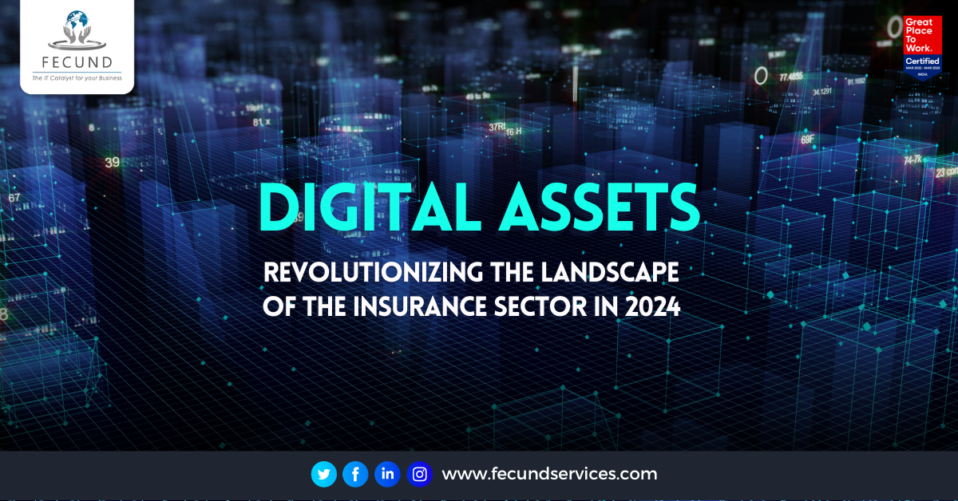
In recent years, the insurance industry has witnessed a significant transformation through the adoption of innovative technologies. This wave of technological advancements, often referred to as “Insurtech,” has revolutionized the way insurance companies operate, interact with customers, and assess risks. From artificial intelligence and blockchain to telematics and data analytics, these technological breakthroughs have paved the way for a more efficient, personalized, and customer-centric insurance landscape. In this article, we will explore some of the key tech innovations that are reshaping the insurance industry and revolutionizing the way insurance is perceived.
-
The Rise of Insurtech: A Paradigm Shift in the Insurance Industry
The emergence of Insurtech has brought about a paradigm shift in the insurance industry. Traditionally, insurance operations were largely paper-based and relied heavily on manual processes. However, with the infusion of technology, insurers can now leverage digital solutions to streamline their operations, enhance customer experience, and develop new business models.
-
Artificial Intelligence (AI) in Insurance: Enhancing Efficiency and Accuracy
2.1 AI-powered Claims Processing
AI-powered claims processing has revolutionized the way insurance claims are handled. By leveraging machine learning algorithms, insurers can automate the claims assessment process, ensuring faster turnaround times and improved accuracy. AI algorithms can analyze large volumes of data, including policy information, accident reports, and medical records, to determine the validity of claims and calculate the appropriate settlement amount.
2.2 Virtual Agents and Chatbots
Virtual agents and chatbots have become an integral part of customer service in the insurance industry. These AI-powered assistants can handle customer inquiries, provide policy information, and even assist in filing claims. By automating routine interactions, insurers can free up their human resources to focus on more complex tasks, while customers benefit from quick and efficient support.
2.3 Predictive Analytics for Risk Assessment
Predictive analytics has empowered insurers to assess risks more accurately and price policies accordingly. By analyzing vast amounts of historical data, AI algorithms can identify patterns, trends, and correlations that human underwriters might overlook. This enables insurers to make data-driven decisions when determining premiums, reducing the likelihood of underpricing or overpricing policies.
-
Blockchain Technology: Reinventing Trust and Transparency in Insurance
3.1 Streamlined Claims Management
Blockchain technology offers a decentralized and immutable ledger that enhances trust and transparency in claims management. Smart contracts stored on the blockchain can automatically execute claims settlements based on predefined conditions, eliminating the need for intermediaries and reducing administrative costs. This streamlined process reduces the potential for fraud and accelerates claims resolution.
3.2 Smart Contracts and Peer-to-Peer Insurance
Smart contracts on the blockchain enable the development of peer-to-peer insurance platforms. These platforms allow individuals to create or join insurance pools, eliminating the need for traditional insurance intermediaries. Smart contracts automatically handle policy issuance, premium collection, and claims settlements, creating a more efficient and cost-effective insurance ecosystem.
3.3 Fraud Prevention and Detection
Blockchain’s transparency and immutability make it an effective tool for fraud prevention and detection. By recording policy information, transactions, and claims on the blockchain, insurers can easily trace the history of an insurance contract and identify any suspicious activities. This increased transparency acts as a deterrent to fraudulent behavior and helps maintain the integrity of the insurance landscape.
-
Telematics: Revolutionizing Auto Insurance and Beyond
4.1 Usage-Based Insurance (UBI)
Telematics, the combination of telecommunications and informatics, enables usage-based insurance (UBI). With the help of telematics devices installed in vehicles, insurers can collect real-time data on driving behavior, such as speed, acceleration, and braking patterns. This data allows insurers to personalize premiums based on individual driving habits, rewarding safe drivers with lower rates and encouraging better driving practices.
4.2 Fleet Management and Driver Safety
Telematics also plays a crucial role in fleet management and driver safety. By monitoring vehicles in real-time, fleet managers can optimize routes, track fuel consumption, and ensure timely maintenance. Additionally, telematics systems can provide valuable insights into driver behavior, helping identify areas for improvement and enhancing overall safety on the roads.
4.3 Personalized Premiums and Rewards
Telematics data enables insurers to offer personalized premiums and rewards programs. By tracking driving behavior, insurers can assess risk more accurately, resulting in fairer pricing for policyholders. Furthermore, insurers can incentivize safe driving habits by offering rewards, such as discounts, cashback, or other incentives, creating a win-win situation for both insurers and policyholders.
-
Data Analytics: Unlocking Insights and Personalizing Policies
5.1 Data-Driven Underwriting
Data analytics has transformed the underwriting process by enabling insurers to leverage vast amounts of data to assess risk. By analyzing historical data, market trends, and customer behavior, insurers can make informed decisions when underwriting policies. This data-driven approach allows insurers to offer more personalized policies tailored to the specific needs of customers, enhancing customer satisfaction and retention.
5.2 Customer Segmentation and Targeted Marketing
Data analytics also enables insurers to segment their customer base more effectively and develop targeted marketing strategies. By analyzing demographic data, purchase patterns, and customer preferences, insurers can identify specific customer segments and tailor their marketing messages accordingly. This personalized approach enhances customer engagement and increases the likelihood of conversion.
5.3 Real-time Risk Monitoring
Data analytics, combined with real-time data feeds, allows insurers to monitor risks in real-time and take proactive measures to mitigate potential losses. By leveraging data from various sources, such as weather reports, IoT devices, and social media, insurers can identify emerging risks, issue early warnings, and implement preventive measures. This real-time risk monitoring improves operational efficiency and reduces the frequency and severity of claims.
-
Cybersecurity: Protecting the Digital Assets of Insurers and Insured
6.1 Strengthening Data Security
As the insurance industry becomes more digitized, the need for robust cybersecurity measures becomes paramount. Insurers are increasingly investing in advanced cybersecurity technologies to protect their digital assets and customer data. From encryption and secure authentication to intrusion detection systems and regular security audits, insurers are proactively safeguarding against cyber threats.
6.2 Detecting and Mitigating Cyber Threats
Insurtech innovations also include advanced tools for detecting and mitigating cyber threats. AI-powered algorithms can analyze network traffic, identify suspicious activities, and respond in real-time to prevent potential breaches. Additionally, insurers are collaborating with cybersecurity firms to develop tailored solutions that address the evolving nature of cyber risks.
6.3 Educating Policyholders on Cyber Risks
Insurers are taking proactive measures to educate policyholders about cyber risks and the importance of cybersecurity. By providing resources, online guides, and interactive platforms, insurers empower their customers to make informed decisions and take necessary precautions to protect their digital assets. This focus on cybersecurity education enhances customer trust and reduces the likelihood of cyber-related claims.
-
The Future of Insurtech: Emerging Technologies and Trends
7.1 Internet of Things (IoT) and Connected Insurance
The Internet of Things (IoT) is set to revolutionize the insurance landscape further. Connected devices, such as smart homes, wearable devices, and connected cars, generate vast amounts of data that insurers can leverage to assess risks accurately, prevent losses, and offer personalized coverage. As IoT adoption continues to grow, insurers will need to adapt and embrace the opportunities presented by this interconnected ecosystem.
7.2 Wearable Devices and Health Insurance
Wearable devices, such as fitness trackers and smartwatches, are already influencing the health insurance sector. By monitoring policyholders’ health metrics in real-time, insurers can encourage healthy lifestyles, offer personalized wellness programs, and incentivize policyholders to maintain an active and healthy lifestyle. This integration of wearables and health insurance promotes preventive care and reduces healthcare costs.
7.3 On-Demand Coverage and Microinsurance
On-demand coverage and microinsurance are emerging trends that cater to the evolving needs of customers. With the rise of the sharing economy and the gig economy, individuals often require insurance coverage for short durations or specific events. Insurtech platforms are leveraging technology to offer on-demand policies that can be activated and deactivated as needed, providing flexibility and cost-effective coverage options.
Conclusion
Insurtech has unleashed a wave of tech innovations that are transforming the insurance landscape. From artificial intelligence and blockchain to telematics and data analytics, these technologies are revolutionizing how insurance companies operate, interact with customers, and assess risks. By embracing these innovations, insurers can enhance operational efficiency, improve customer experience, and develop personalized policies that meet the evolving needs of policyholders.
FAQs (Frequently Asked Questions)
Q1: How does AI-powered claims processing benefit insurers and policyholders?
AI-powered claims processing benefits insurers by automating the claims assessment process, leading to faster turnaround times and improved accuracy. For policyholders, it means quicker claims resolution and a smoother experience.
Q2: What are smart contracts in the context of blockchain technology?
Smart contracts are self-executing contracts with the terms of the agreement directly written into code. They automatically execute actions when predefined conditions are met, eliminating the need for intermediaries and enhancing trust and transparency.
Q3: How does telematics benefit auto insurance?
Telematics enables auto insurers to collect real-time data on driving behavior, allowing for personalized premiums, improved driver safety, and the potential for rewards for safe driving practices.
Q4: How does data analytics personalize insurance policies?
Data analytics enables insurers to analyze vast amounts of data to assess risk and tailor policies to the specific needs of customers. This leads to more personalized coverage and enhanced customer satisfaction.
Q5: What is the future of Insurtech?
The future of Insurtech lies in emerging technologies such as the Internet of Things (IoT), wearables, and on-demand coverage. These innovations will continue to shape the insurance industry, providing more personalized and flexible insurance solutions.
 Author Bio: Abhishek Peter is an Assistant Manager – Digital Marketing at FECUND Software Services. With a Master’s degree in Marketing and various certifications in the field, he is highly skilled and passionate about solving complex problems through innovative marketing solutions. Abhishek is an avid reader and loves to explore new technologies. He shares his expertise through his blog, which provides insights into the world of marketing, technology and more. LinkedIn Profile
Author Bio: Abhishek Peter is an Assistant Manager – Digital Marketing at FECUND Software Services. With a Master’s degree in Marketing and various certifications in the field, he is highly skilled and passionate about solving complex problems through innovative marketing solutions. Abhishek is an avid reader and loves to explore new technologies. He shares his expertise through his blog, which provides insights into the world of marketing, technology and more. LinkedIn Profile




Post a comment